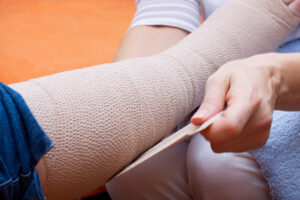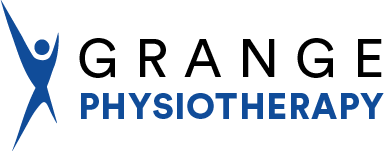Lymphoedema Rockingham
 The Lymphatic System
The Lymphatic System
Lymph is a clear fluid that forms in the body and normally drains back into the blood circulation through a network of lymph vessels and lymph nodes. The lymphatic system plays an important role in the body’s defence against infection.
How Lymphoedema Occurs
When the drainage routes through the lymphatic system become damaged or blocked, lymph accumulates in the tissues, resulting in swelling. Unlike other types of oedemas, lymphoedema leads to changes in the tissues, such as fibrosis, and increases the risk of infection. In such cases, controlling the swelling can become even more challenging.
Signs and Symptoms
- A heavy, tight, or full feeling in a limb or body part
- Swelling: you may notice indentations in the skin from tight clothing, jewellery, or shoes
- Ache, pain, or tension in the limb or body part
Types of Lymphoedema
Primary lymphoedema may be present at birth, develop at the onset of puberty, or not become apparent until later in adulthood, but it is a result of how the lymph vessels were formed. The number of lymphatic vessels may be reduced, increased, or absent, and this type of lymphoedema may also be associated with other congenital abnormalities or syndromes, and can include lipoedema.
Secondary lymphoedema is the result of damage to the lymphatic pathways. It can occur because of cancer treatment following surgery or radiation therapy. Lymphoedema can also develop because of infection, severe injury, burns, or any other trauma or surgery that causes damage to the lymph nodes and vessels. Secondary lymphoedema can affect individuals of all ages and may occur months or years after surgery, so it is important to understand and manage the lifelong risk.
 How Lymphoedema is Treated
How Lymphoedema is Treated
Research shows that the best results are obtained through Combined Decongestive Therapy, which consists of:
- Manual Lymphatic Drainage (MLD)
- Elevation
- Compression garments/compression bandaging
- Exercises
- Skin care: the use of antibacterial cleansers and pH neutral lotions
- Other aids such as kinesiotaping and LASER therapy may be useful in improving the efficiency of the lymphatic system
- Treatment may vary depending on the stage and severity of the lymphoedema
- Education on recognising early warning signs and learning to manage the condition is crucial
Conditions for the beneficial use of MLD Therapy
- Primary and secondary lymphedema
- Lipoedema
- Venous insufficiency and leg ulcers
- Post-traumatic oedema
- Post-operative oedema
- Promotion of wound and scar healing
- Sinus congestion
- Conditions of the nervous system with local oedema (e.g. migraines, Parkinson’s disease, or multiple sclerosis)
- MLD has a calming effect on the autonomic nervous system, aiding in relaxation. It can also improve the quality of sleep, relieve constipation, and aid digestion.

Meet our Australasian Lymphology Association accredited lymphoedema therapist, Esmond Tang.
